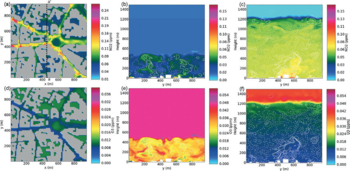MOSAIK-II - Second phase of the project "Model-based urban planning and application in climate change".
Bundesministerium für Bildung und Forschung (BMBF)
MOSAIK-II is a German research project funded by the BMBF within the research network "Urban Climate in Change" [UC]²), which aims to further develop the PALM-4U urban climate model following the MOSAIK-I project and to establish it as an operational tool for municipalities and urban planners. PALM-4U enables simulations of large cities up to 2,000 km² in size with grid-resolved buildings.
The assessment of current local air pollution control measures is one of the key applications of PALM-4U, which is receiving significant scientific and policy attention.
In the first phase of MOSAIK, an atmospheric gas-phase chemistry module was added to PALM to enable air quality-related studies with PALM-4U. Although large-eddy simulation (LES) studies involving chemistry have been conducted in the past, PALM-4U is the first LES model that can simulate chemical transformation, advection, and deposition of air pollutants for larger and realistically shaped urban areas (see figure). The KPP preprocessor-based implementation allows flexible generation and selection of gas-phase chemistry mechanisms. In addition, dry deposition processes and modules for photolysis and emission input have been implemented in PALM-4U within MOSAIK Phase I. The goal within MOSAIK II is to improve the urban chemistry module with respect to biogenic emissions, advanced aerosol description including ultrafine particles, pollen emissions and transport, and advanced emissions and wet deposition of pollutants.
